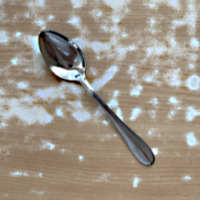 Stargardt changed my table manners. Fortunately, the customs in Kenya suit me in that regard.
Stargardt changed my table manners. Fortunately, the customs in Kenya suit me in that regard.
A while ago I received a snapshot that a friend took of me at dinner in a restaurant. I noticed how improperly I was hunched over my plate. As a result, I observed myself and found out that this is an effect of Stargardt - and not just the often rather dim lighting in Kenyan restaurants. I often sit like this while eating at home too, and I have a good table lamp next to me. The problem is that I can't quite see what I'm putting on my fork. And above all how it is situated there. I just see that there is something on it and feel it by the weight of the fork. On the way to the mouth, the thing turns out to be unstable and the bite slips off the fork and falls back into the plate. Or on my trousers. Sometimes I need several attempts before it works out. To minimize these risks, I have apparently started to bend over my plate. This reduces the distance from the plate to the mouth and increases the chance that something will fall back again.
So I started to eat more from bowls. With a spoon. I can hold the bowl with one hand so it's closer to my mouth and I can sit upright. And the concave shape of the spoon makes it difficult for the carrot piece to slip off. Here in Kenya, if lunch is served for a larger group on an occasion, you will usually get a plate with a high rim and a spoon before you load the food on the plate at the buffet. Often there are also not enough tables for everyone, so you sit on a chair (there are always enough of those) and balance the plate in one hand while the other hand operates the spoon. Sometimes, when I've been sitting all morning, I eat standing and talk to a colleague. And with traditional dishes no cutlery is served at all, they are eaten with the fingers (although that too has its pitfalls, see What am I actually eating here? Part 2). So I'm learning to eat with a spoon in Kenya.
